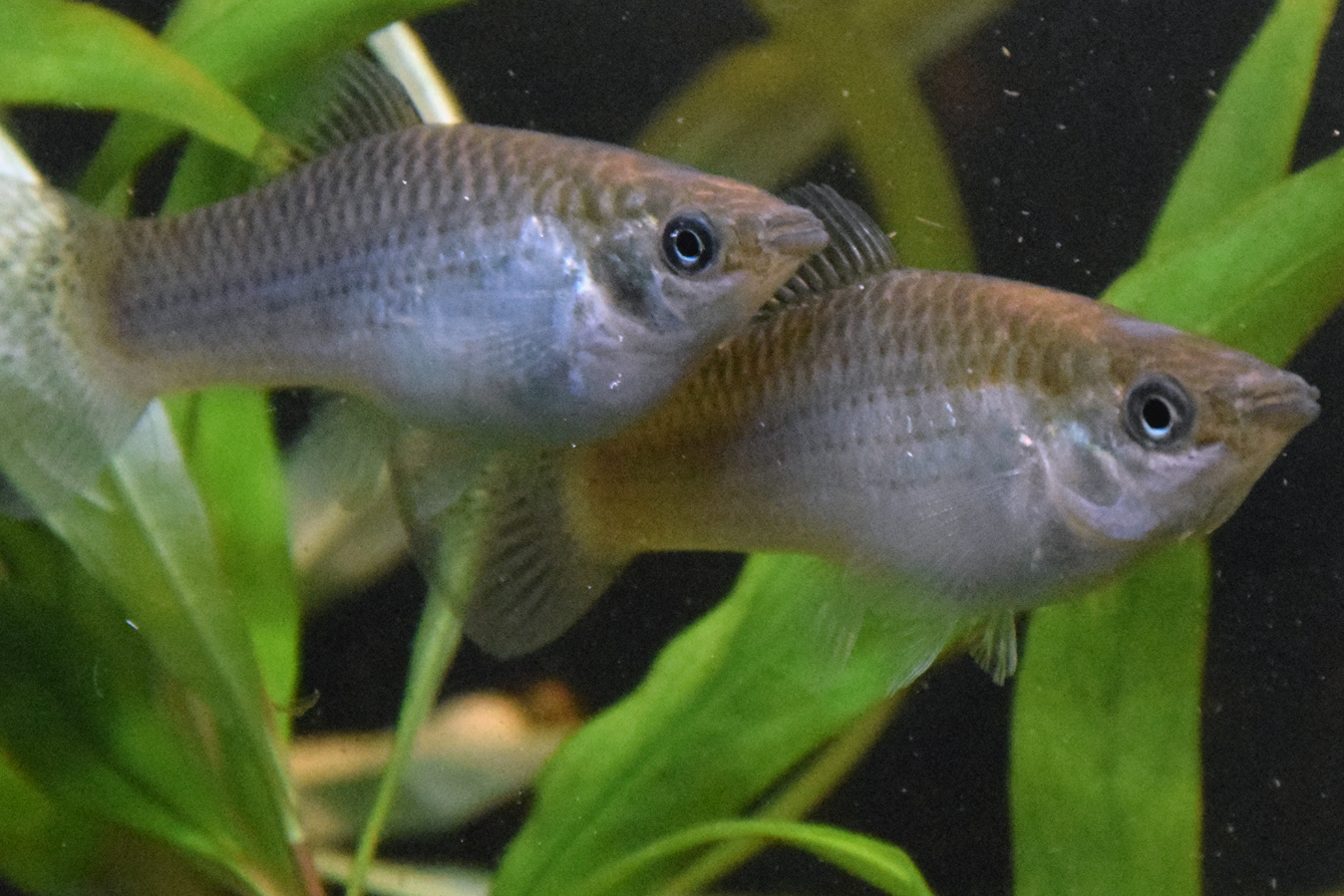One natural clone is the Amazon molly. A research team led by the Biozentrum of the University of Würzburg with the Leibniz Institute of Freshwater Ecology and Inland Fisheries (IGB) has shown that over hundreds of thousands of years, this small fish has found a way to cope with the challenges of its origin and reproduction.
In the course of evolutionary adaptation, traits emerge that tend to be advantageous or disadvantageous to the survival or reproductive success of a species. This happens through natural mutation and subsequent selection. For a new trait to be inherited, it must have a genetic basis. Here, sexual reproduction has an advantage, because the offspring carry equal parts of the genetic information of father and mother, which always makes new combinations possible. Therefore, there are only very few vertebrate species reproducing clonally – via asexual reproduction. In this case, the offspring are genetic copies of the mother – there are no fathers.
Clonal vertebrates usually originate from interbreeding two closely related species, i.e. they are hybrids. One of these species is the Amazon molly, named after the female warrior tribe of the Amazons from Greek mythology. "The Amazon molly probably goes back to a single animal, the "Prima Eva", which arose from the mating of a female Atlantic molly with a male sailfin molly", reported IGB researcher Dr. David Bierbach. Amazon mollies exist for more than a hundred thousand years, although according to scientific theories they should actually be extinct.
Clonal hybrids actually have a threefold difficulty in surviving
Clonal hybrids have the problem that the two different genomes of their heterospecific ancestors compete or even interfere with each other.
There are two more reasons that argue against asexually reproducing species surviving on the long run: Harmful changes occur in any genome at some point. In creatures whose offspring are pure clones, these defects would accumulate over generations until there are no more healthy individuals. The other argument against the long survival of a species whose offspring are all clones of their mothers: These species are usually not capable of adapting to environmental changes as quickly as their sexually producing counterparts. So within a few generations, they should be on the losing side of evolution which calls for the survival of the fittest.
This study shows that over the course of their hundreds of thousands of years of evolution, Amazon mollies have found ways to cope with the “burden” of their hybrid origin and have even developed mechanisms to adapt to their habitats.
"In previous studies, we found almost no signs of genetic degeneration in the genome of the Amazon molly, but rather unique genetic variability and clear evidence for ongoing evolution. Now we have also been able to show that these fish have developed mechanisms to successfully regulate the two genomes," said Professor Manfred Schartl from the University of Würzburg.
The Amazon molly is a jack of all trades
The team investigated which genes are expressed from the animals' DNA, i.e. which are being "used". The researchers were able to show that in the Amazon molly, not that both genomes of their ancestors are used equally often, but that in many genome areas either one or the other genome is used. This regulation prevents the two genomes from interfering with each other.
They also compared the use of genes from two different clonal lines. To explain, different clonal lineages arise from natural mutations. They showed that the individuals of one clone line use the same genes – they have the same gene expression patterns. But individuals from the other clone line have a different expression pattern. In comparison: In artificially created hybrids, the expression patterns seem to be rather random among the single individuals. So, not only do the clone lines differ slightly genetically, these differences are also functional and not random. These consistent cy patterns of expression within a lineage may be the mechanism previously thought to be lacking in clones to be able to adapt to their respective habitats.
"The two genomes, which are actually competing, may actually help with successful adaptation – after all, it gives Amazonian mollies twice as much genetic information, and the long evolutionary history of this species has led them to master it adaptively", David Bierbach interpreted the results.
The researchers now want to investigate how the differences in gene expression between the clone lines influence their behaviour and other aspects of their lives.


